mobile Ansicht, to the English Version tap the flag
![]()

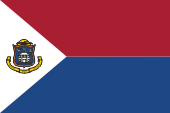

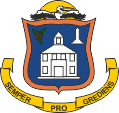
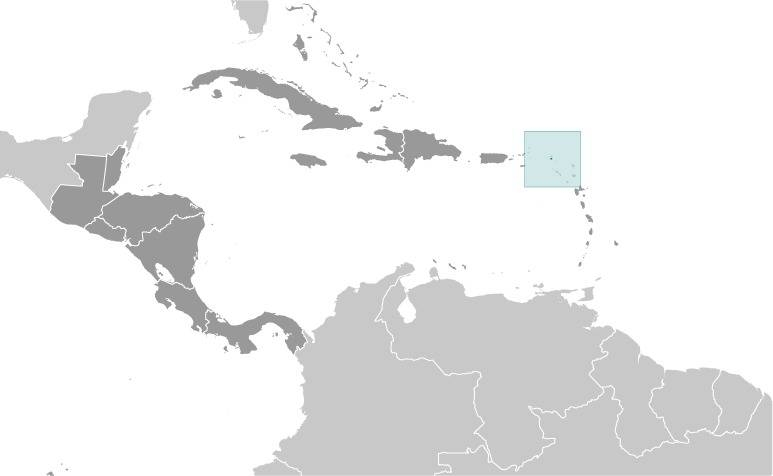
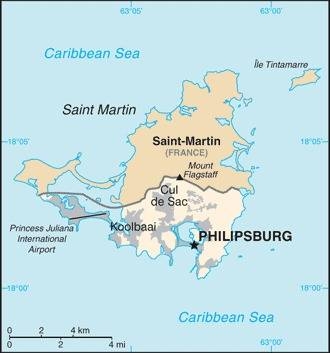
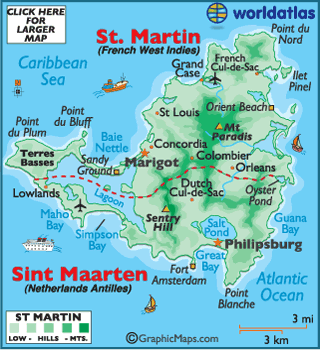
1493 · Christoph Kolumbus entdeckt die Insel am 11. November, dem Tag des Heiligen Martin, und nennt sie "Isla de San Martín"
1625 · Gründung einer französischen Siedlung
1631-1633 · St. Martin ist Kolonie der Niederlande
1633 · St. Martin wird eine Kolonie von Spanien
1638 · Gründung einer spanischen Siedlung
1648 · Gründung einer französischen Siedlung
23.03.1648 · offizielle Teilung der Insel zwischen Frankreich und den Niederlanden
1651-1665 · der französische Teil von St. Martin ist ein Lehen des Malteserordens
1672-1679 · der französische Teil von St. Martin ist von England besetzt
1679-1689 · die gesamte Insel ist von Frankreich besetzt
1689-1792 · der niederländische Teil von St. Martin untersteht der Verwaltung der Niederländischen Westindienkompanie
1690-1699 · die gesamte Insel ist von England besetzt
1699-1702 · die gesamte Insel ist von Frankreich besetzt
1702 · der offiziell französische Teil von St. Martin ist von Großbritannien besetzt
1703-1713 · der französische Teil von St. Martin ist von den Niederlanden besetzt
1744-1748 · der französische Teil von St. Martin ist von Großbritannien besetzt
1759-1763 · der französische Teil von St. Martin ist von Großbritannien besetzt
1779-1781 · die gesamte Insel ist von Frankreich besetzt
1781 · die gesamte Insel ist von Großbritannien besetzt
1781-1784 · der französische Teil von St. Martin ist von Großbritannien besetzt
1793-1794 · die gesamte Insel wird von den Niederlanden verwaltet
1794-1795 · der französische Teil von St. Martin ist von Großbritannien besetzt
1795-1801 · die gesamte Insel ist von Frankreich besetzt
1801-1802 · die gesamte Insel ist von Großbritannien besetzt
1810-1816 · die gesamte Insel ist von Großbritannien besetzt
1816 · offizielles Wiederherstellen der Teilung zwischen Frankreich und den Niederlanden
1828 · der niederländische Teil von St. Martin, Aruba, Bonaire, Curaçao, Saba, Sint Eustatius, und Niederländisch-Guayana werden als Niederländisch-Westindien zusammengefasst und dem Gouverneur von Niederländisch-Guayana als Generalgouverneur unterstellt
1848 · der niederländische Teil von St. Martin, Aruba, Bonaire, Curaçao, Saba, Sint Eustatius werden als "Kolonie Curaçao en onderhorigheden" (Colony of Curaçao and Dependencies) zusammengefasst
1936 · der niederländische Teil von St. Martin nimmt offiziell als Landesnamen die niederländische Schreibweise "Sint Maarten" an
1948 · die "Kolonie Curaçao en onderhorigheden" wird in "Niederländische Antillen" umbenannt
1954 · die Niederländischen Antillen werden ein autonomer Teil der Niederlande
1994 · Volksabstimmung in Sint Maarten zugunsten des Verbleibs bei den Niederlanden
2000 · Volksabstimmung in Sint Maarten zugunsten eines separaten Status innerhalb der Niederlande
2006 · Sint Maarten und Curaçao erhalten einen separaten Status innerhalb der Niederlande
10.10.2010 · die Niederländischen Antillen werden aufgelöst, Sint Maarten wird ein autonomes Land der Niederlande
Quelle:
World Statesmen,
Wikipedia (D),
Discovery '97
![]()
